Wheels for Wellbeing Wheeling Workshop Resources
These resources were created for a wheeling workshop on improving public realm accessibility for Disabled people at the March 2024 Living Streets summit in Sheffield.
If you use any of the resources or sections of the resources, please give credit to Wheels for Wellbeing.
Wheeling workshop route information
Workshop handout in Word format
Workshop handout in pdf format
Answers and links sheet in Word format
Answers and links sheet in pdf format
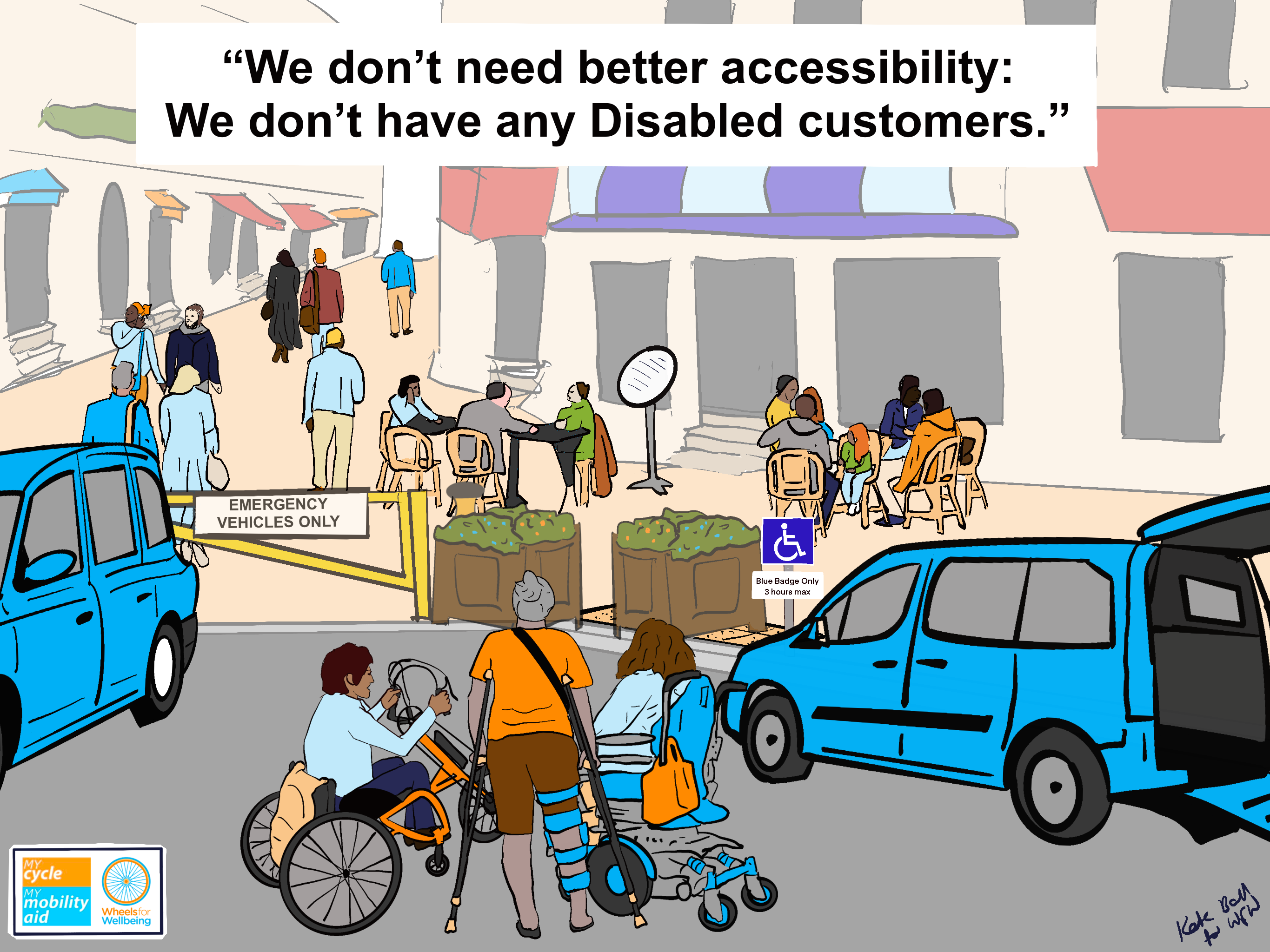 This is not a comprehensive guide to Disabled people’s mobility: Every Disabled person is different. Wheels for Wellbeing call for designers and decision makers to use good practice guidance and inclusive consultation to ensure our public spaces provide equitable accessible to everyone.
This is not a comprehensive guide to Disabled people’s mobility: Every Disabled person is different. Wheels for Wellbeing call for designers and decision makers to use good practice guidance and inclusive consultation to ensure our public spaces provide equitable accessible to everyone.
Disability and Disabled people’s mobility
- What proportion of the UK’s population are Disabled?
- What proportion of Disabled people have:
- A mobility impairment?
- A visual impairment?
- What proportion of mobility impaired people:
- Can move 200m without a break?
- Use a wheelchair?
- What proportion of mobility impaired people have an aid suitable for making 1km journeys?
- What other groups of Disabled people are likely to face barriers to mobility?
Bonus question:
How might Disabled people’s mobility be affected by any of:
Signage, noise, traffic, lighting, secluded spaces, busy spaces, contrast and patterning, road crossing points, anything else?
Spot the barriers 1:
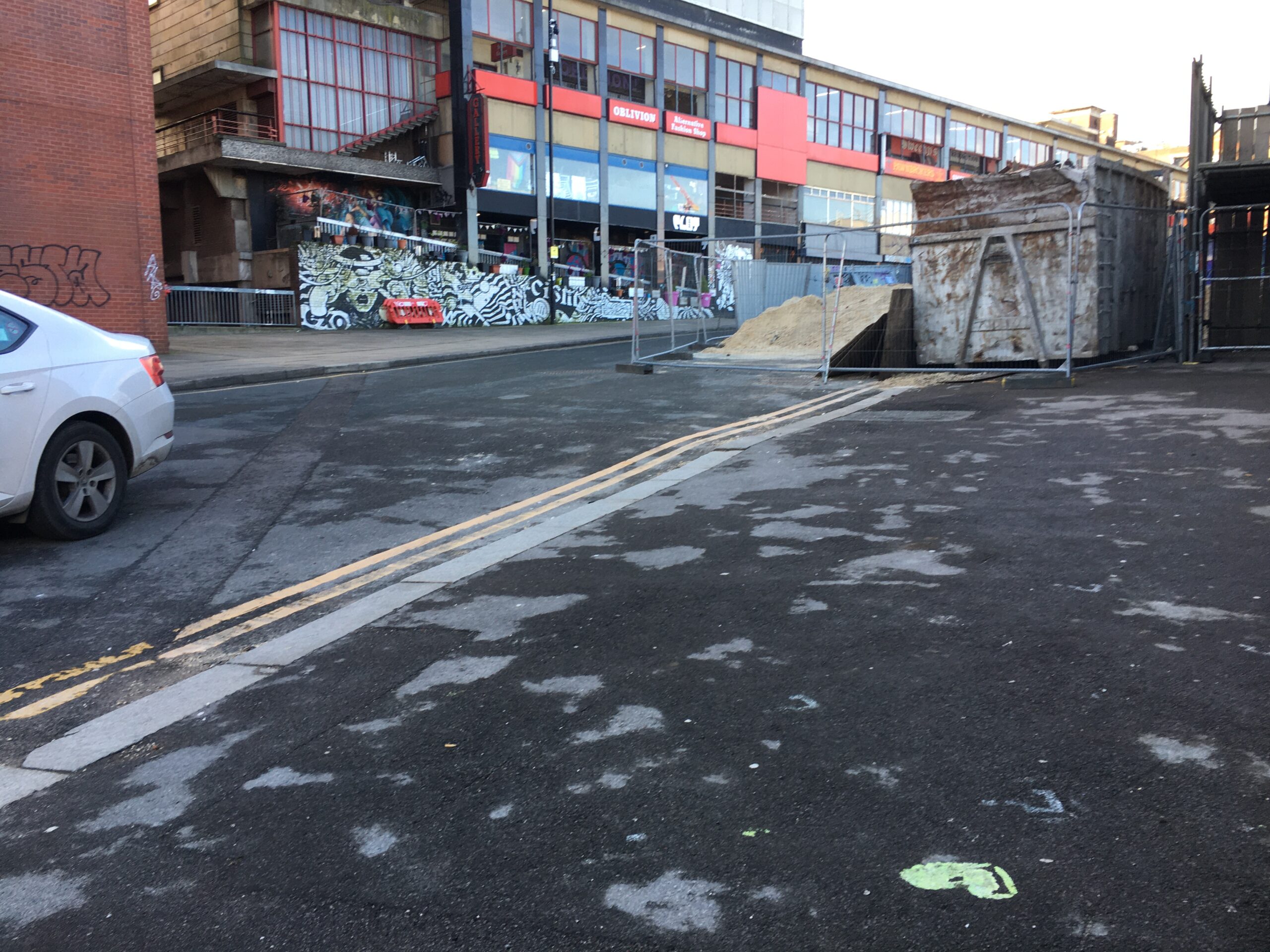
“The Tradesman’s Entrance”: In many “accessible” venues, non-Disabled people go up steps through a well-lit automatic door into an attractive reception. People who need step-free access are often sent to the back of the building, via secluded and often obstructed spaces, to an unattractive, non-automatic door which may or may not have a bell or intercom. If you can get through the door, there may be signage to help you find the reception area.
How welcome would you feel going to a place like this? Would having to use a separate entrance be considered acceptable for people with any other protected characteristic?
Mobility options: Typical speeds, distances and function of different aids
- What typical minimum walking speed is used in public space designs?
- How far and how fast does an average active manual wheelchair user wheel each day? *Active wheelchairs are not usually available on the NHS so are normally privately funded. Active wheelchair users as a group have high physical capacity and have less restricted mobility than most other wheelchair users, who would be very unlikely to move at these speeds or for these distances.*
- What’s the maximum legal speed for:
- A class 2 powered mobility aid?
- A class 3 powered mobility aid?
- E-assistance on a legal electric pedal cycle?
- Which powered mobility aids are NOT recommended for use in wet weather?
Bonus questions:
Are class 3 mobility scooter users permitted to travel in cycle lanes or bus lanes, or on buses, trams or trains?
Most of us will become Disabled as we age. What restrictions on your activity would you accept from inaccessible infrastructure or rules?
Spot the barriers 2:
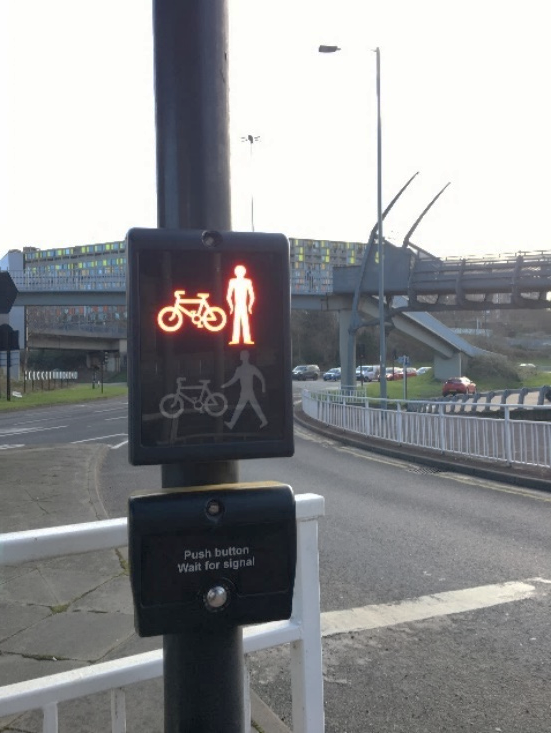
“Performative Gratitude”: When spaces and events are inaccessible by design, people will often help a Disabled person who needs assistance. People offering help may be paid venue staff or volunteers, or members of the public. Helpers will often expect a Disabled person to be visibly grateful for help, even if the person does not consent to being helped.
Would you feel grateful to the individuals helping you?
Would you have any reservations about accepting any kinds of help from a person you don’t know?
What if the help involved them touching, moving or lifting you?
How would you feel about a system or infrastructure which made you – but not non-Disabled people – dependent on the good will of strangers?
Barriers to making journeys
We’ve talked about some options Disabled people may have to make journeys – and some of the limitations associated with these.
- What additional social barriers to making active journeys walking/wheeling and cycling could different Disabled people face?
- What additional financial barriers to making active journeys could different Disabled people face?
- What additional physical barriers to making active journeys could different Disabled people face?
- What other barriers to making active travel, public transport and private vehicle journeys do you think different Disabled people may face?
- How do you think we should reduce or remove these barriers?
Bonus questions:
Under the Equality Act, there is an anticipatory duty to make reasonable adjustments to provide Disabled people with equal access to public spaces compared to non-Disabled people.
What are reasonable adjustments, and what does anticipatory mean?
Spot the barriers 3:
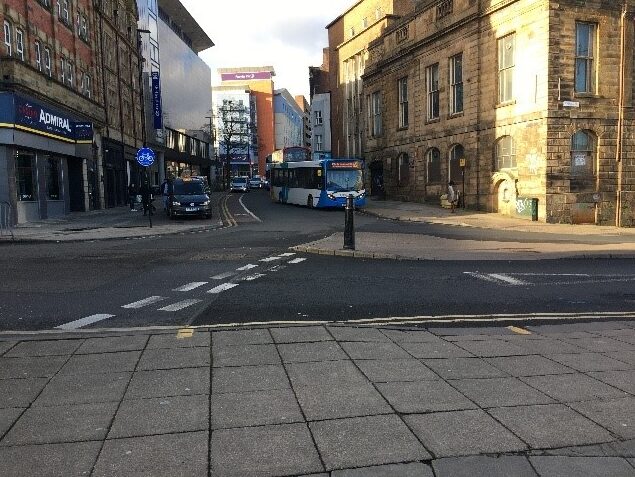
“The Backstory”: Disabled people are frequently approached in public and asked to provide intimate personal and medical information – either spontaneously by total strangers or by staff gatekeeping access to facilities we need: “So, what happened to you? When will you get better? Why do you want to use the lift? Why won’t you talk to me?”
How would you feel about strangers asking you to provide personal information or asking questions about your body to justify your needs, presence or appearance to them?
Getting the basics right: Providing adequate infrastructure for Disabled mobility
We want to see a positive spiral of change, where more Disabled people are able to make journeys, so spaces are made more accessible, so more Disabled people are able to make journeys…
Understanding the infrastructure needs of Disabled people is essential.
- What guidance and resources are available to support accessible public space design?
- From your own knowledge and this discussion, how would you now approach:
- Campaigning for public realm changes?
- Consultation and design of public realm changes – including new and renovated development?
- What further information, research and practice changes would you like to see around accessibility and inclusive mobility?
Bonus questions:
What has most interested you in this session?
What did you disagree with?
What else would you like to find out about?
Please provide any feedback to kate@wheelsforwellbeing.org.uk
Spot the barriers 4:
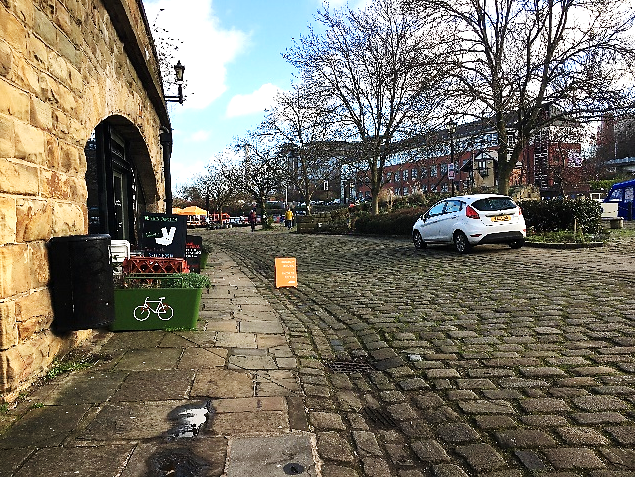
“The Inspiration”: You’ve taken your children to soft play, and you’re enjoying a relatively quiet cuppa. You’re out for a meal… At the cinema… At work… Food shopping…
Would you think you were being impressive when doing any of these things?
How would you feel if someone called you “inspirational” when doing everyday tasks?
And finally: Do we need to strike a balance between heritage and accessibility?
When this hotel was opened in 1862, it was lit with gas lamps. There were two toilets and one communal bathroom on each floor. At the same time, most homes would have had no indoor toilet: Many would have had no running water at all. Nowhere had central heating or electricity, let alone broadband.
Now, we expect homes to have electricity, water and heating as standard – and broadband access is covered by a universal service obligation.
Nearly 30 years after the Disability Discrimination Act (1995) and 14 years after the Equality Act (2010) mandated equality of access for Disabled people, is there really any case for retaining inaccessible features such as cobbles and setts, steps-only entrances, pavement clutter, poor carriageway crossings, poor lighting, poor contrast and poor acoustic designs in our public realm?
Or should we consign inaccessibility to museum heritage displays, just as we have done with the gas lamps, wells and open hearths our ancestors relied on?
